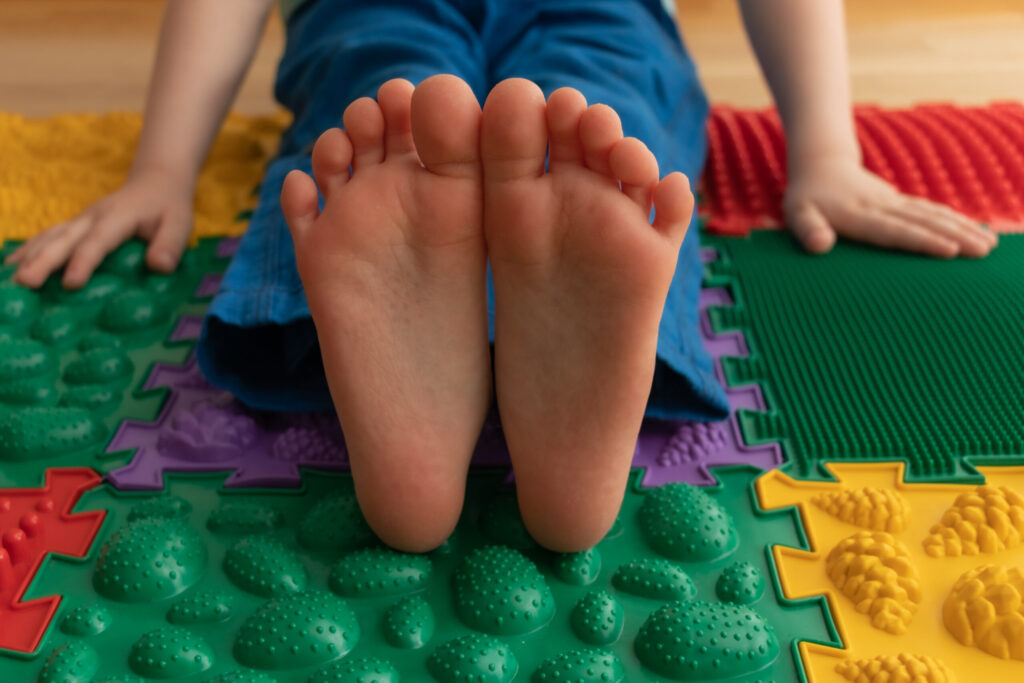What is Plantar Fibroma?
Plantar fibroma is a relatively rare condition that affects fewer than 200,000 people who develop one in the U.S. each year.
Plantar fibroma shows up as growths or lumps on the arch of the foot. The masses develop on the plantar fascia, the ligament that stretches from heel to toe. These growths are completely benign (non-cancerous) but can be uncomfortable or even painful.
Although most healthcare providers think of plantar fibroma as something that affects adults, it can appear in children and adolescents, as well. People who develop these masses frequently might be diagnosed with plantar fibromatosis, which means the person tends to develop future plantar fibromas.
Identifying Plantar Fibroma
Plantar fibroma symptoms are discomfort or pain in the foot’s arch (especially when your child is wearing shoes). Because the masses are so small (usually less than an inch across), you may not notice anything until your child complains of symptoms. A visible symptom is a curve of the skin around the bump or a slight bulge. Or your child may never notice it at all.
If your child complains about discomfort on the arch of the foot or you see an odd bump, have a physician look at it to identify whether it is plantar fibroma. After a physical exam of your child’s foot, a pediatric orthopedist may want to do an MRI, X-ray, or ultrasound imaging to confirm the mass is indeed a fibroma (as opposed to a different kind of benign growth) and to check for any issues with the bone around the mass and soft tissue to rule out serious conditions.
There are no known plantar fibroma causes, but there may be an increased risk of developing these growths for people with diabetes or epilepsy, European heritage, males, or those with a genetic predisposition to the condition. Another contributing factor is injury to the plantar fascia through overuse or repetitive stress to the area as from sports.
Certain medications can also trigger plantar fibroma formation. These include beta-blockers, anti-seizure medicine, excess vitamin C supplements, and glucosamine/chondroitin medications.
Treating Plantar Fibroma
Once your child’s plantar fibroma diagnosis is confirmed, plantar fibroma treatment may include:
- Pain relievers and anti-inflammatory drugs
- Orthotics for your child’s shoes to relieve the pressure on the area
- Stretching the ankle, calf, and foot
- Electrotherapy or shock wave therapy
- A topical cream called verapamil
- Cortisone injections
Changing your child’s footwear to something more supportive can also help.
Other treatment methods are:
- Plantar fibroma massage – there are two kinds.
- Golf ball massage, in which you place a golf ball in the arch of your child’s foot while they are seated in a chair. Have them press down on the ball until the pressure releases (but not to the point of physical discomfort).
- Petrissage massage is a deep pressure massage to the sole, using your thumb in a crisscross manner from your child’s heel to the ball of the foot.
- Plantar fibroma surgery is rare and should only be done if symptoms don’t clear up or can’t be managed with non-invasive treatments. Fibroma surgery ranges from local excision (only removing the plantar fibroma) to wider areas to removing part or all of the plantar fascia (in extreme cases).
Check With The Pediatric Orthopedic Center
If you suspect your child has plantar fibromas, our pediatric orthopedists will examine your child and recommend the wisest course of treatment to relieve and manage symptoms. If you notice new growths or your child’s discomfort level increases, don’t hesitate to call our office for a consultation at (973) 538-7700.



